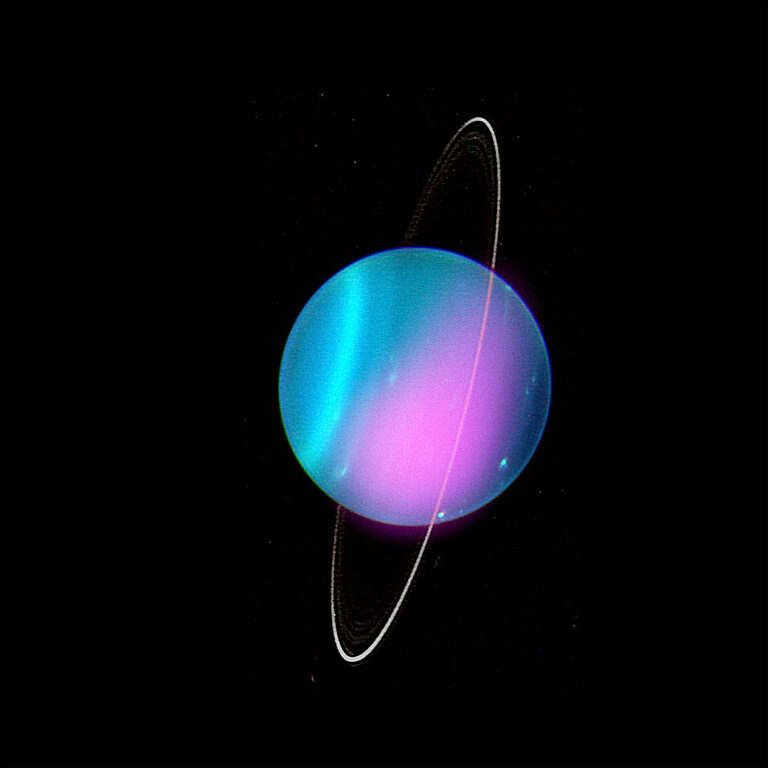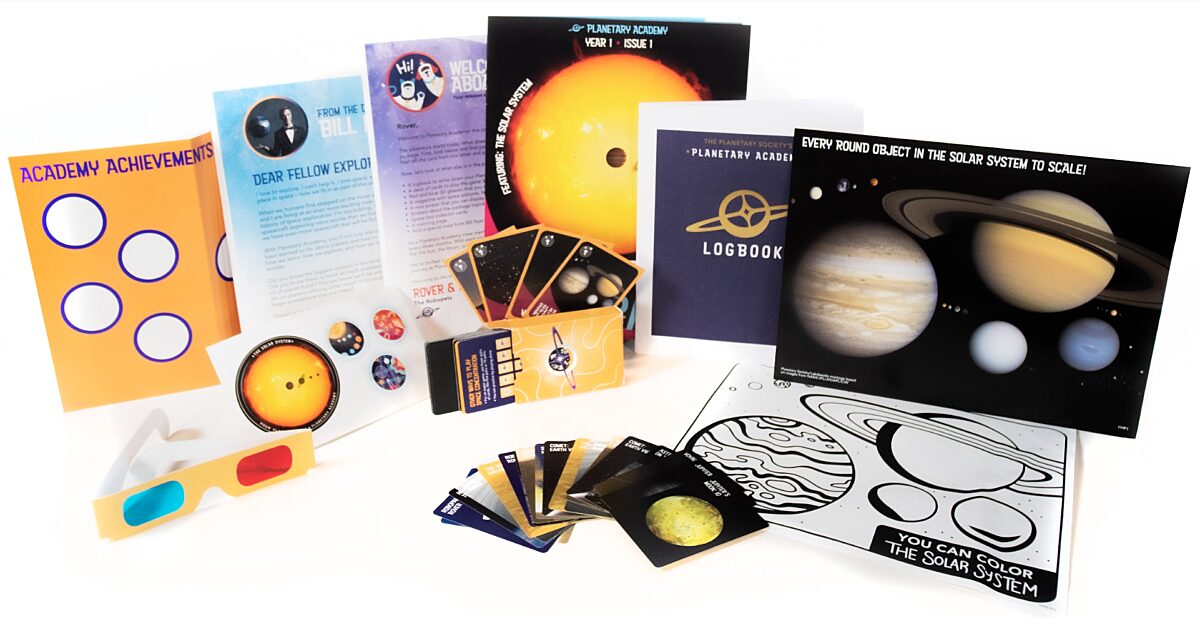The Downlink • Sep 16, 2022
Outer worlds and outstanding science
Space Snapshot

Uranus has intriguing characteristics like a 98-degree tilt, bright aurorae in unexpected places, and moons that might leak liquid water onto their surfaces. It’s no surprise the United States planetary science community has identified the icy world as a top priority for a NASA flagship mission. The latest issue of the Planetary Report, The Planetary Society’s quarterly magazine, explores why this mysterious planet is worth exploring, and what we hope to learn from going there. Pictured: An X-ray image of Uranus taken by NASA’s Chandra X-ray Observatory in 2002 (in pink) superimposed on an optical image taken by the Keck-I Telescope in a separate study in 2004. Image credit: X-ray: NASA et al; Optical: W.M. Keck Observatory.
You love space, now take action
This weekly newsletter is your toolkit to learn more about space, share information with your friends and family, and take direct action to support exploration. Anyone can subscribe at planetary.org/connect to receive it as a weekly email.
Mission Briefings


Chinese scientists have discovered a new lunar mineral. The mineral (pictured) was found in samples brought back by China’s Chang'e-5 mission, which landed in December 2020 and was the first lunar sample return mission since the 1970s. The mineral has been named Changesite–(Y) after the mythological Chinese goddess of the Moon. Image credit: Beijing Research Institute of Uranium Geology.

The Artemis I rocket is getting back on track for a launch to the Moon. Teams have replaced the seals on the Space Launch System rocket’s core stage, which is where a liquid hydrogen leak was detected during the Artemis I launch attempt on Sept. 3. The system will be tested again soon to determine whether it can launch on Sept. 27, which NASA has identified as the next launch opportunity.

Blue Origin’s New Shepard spaceship is facing launch challenges too. A problem with the suborbital vehicle caused an in-flight abort a minute after liftoff Sept. 12. The vehicle was uncrewed, filled only with a capsule containing science and engineering payloads that parachuted to a safe landing.
From The Planetary Society


Cassini may be long gone, but its usefulness certainly isn’t. NASA’s mission to Saturn ended its 13-year orbit of the ringed planet back in 2017, but the data it collected are still being analyzed today. As new scientific techniques are developed, old data can yield new discoveries. Find out what Cassini continues to teach us about the Saturn system. Pictured: Wispy fingers of bright, icy material extending thousands of miles from Saturn's tiny moon Enceladus and into the E ring. Image credit: NASA/JPL-Caltech/SSI.

Getting back to the Moon is an international effort. Want proof? Hear for yourself from leaders of the European Space Agency, the German Aerospace Center, and the Italian Space Agency in the latest episode of Planetary Radio. They sat down with host Mat Kaplan for conversations about the international collaboration behind the Artemis program, along with some of the other brilliant successes their agencies have achieved.
What's Up

Jupiter is rising just after sunset in the east, looking super bright. Look higher in the sky for yellowish Saturn. Mars rises in the late evening, looking reddish. Find out what else to look for in September's night skies.
Planetary Academy is here!

Almost every grown-up who loves space exploration fell in love with the Universe as a child. That's why we are launching our new Planetary Academy kids membership program, and we need your help! Learn how you can kickstart our new program and open up the Cosmos for the next generation.
Wow of the Week

As part of our A Venus Phosphine Scoop! The Return of Jane Greaves episode of Planetary Radio, Venus researcher Jane Greaves and host Mat Kaplan invited listeners’ artistic depictions of what flying, phosphine-belching Venusian penguins might look like. With an AI-generated assist, Planetary Radio listener Daniel Husserl created this eerily beautiful illustration of our imaginary Venusian penguins enjoying life above the broiling surface of that world. Image credit: Daniel Husserl/Midjourney AI.
Send us your artwork!
We love to feature space artwork in the Downlink. If you create any kind of space-related art, we invite you to send it to us by replying to any Downlink email or writing to [email protected]. Please let us know in your email if you’re a Planetary Society member!


 Explore Worlds
Explore Worlds Find Life
Find Life Defend Earth
Defend Earth


